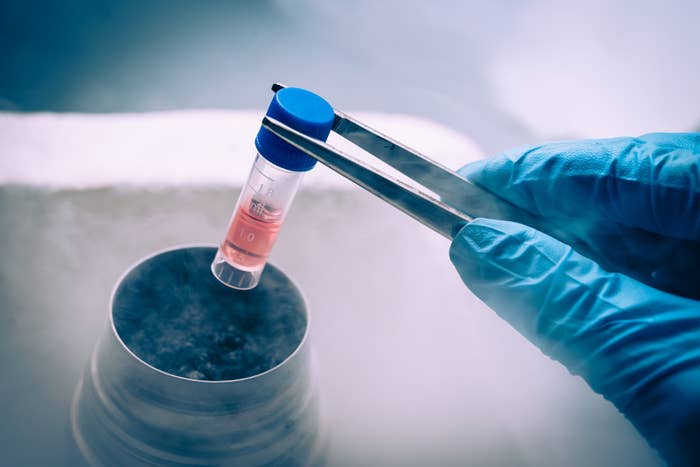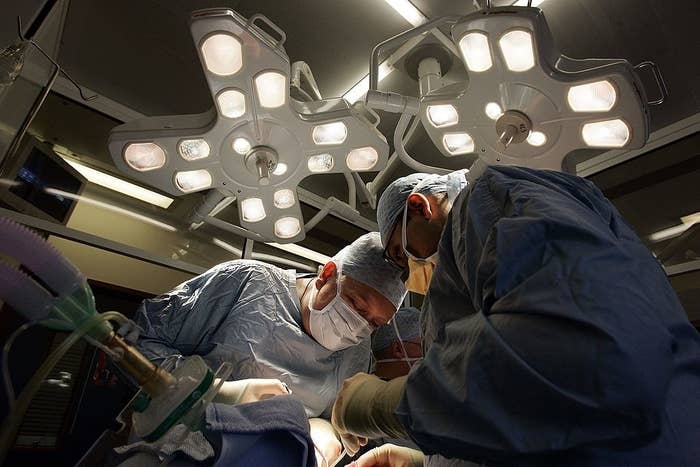
A team of scientists has managed to warm up cryogenically frozen tissues without damaging them in bigger volumes than ever before.
Eventually, this new technology could be used to warm up whole cryopreserved organs, paving the way for organ banks and potentially helping patients on organ transplant waiting lists. But for now, it’s only been shown to work in smaller samples, like arteries and heart valves.
“It’s a big step forward,” Barry Fuller, professor in surgical science and low-temperature medicine at University College London, who wasn’t involved in the study, told BuzzFeed News. “It's pushed forward the possibilities this year much more than in the last 10 to 15 years."
John Bischof, an author on the paper and professor at the University of Minnesota, said in a press briefing that the team’s next step will be to test their method on rabbit kidneys.
"That will be a really big step because you can study that kidney in the lab, and you can then study it after transplant," said Fuller. "That will be the real test of the method, how that transplanted kidney works."
When something is cryopreserved, it’s filled with chemicals called cryoprotectants – essentially, antifreeze chemicals that mean the tissue can be cooled to temperatures as low as -196°C without damaging it. The process is called vitrification, and results in a tissue that is preserved in a glass-like state.
You might have heard of cryopreservation in the context of people having their entire bodies – or just their brains – frozen when they die, believing they will be able to be woken up at an as yet unknown point in the future when whatever disease they died of can be cured.
But it also has real scientific applications right now, in the form of storing living cells and embryos.
For years scientists have been able to cool down organs and keep them stable – they first did it with a rabbit kidney in the 1980s. But in order to actually use an organ you’ve cooled down, you have to be able to heat it up again without doing any damage. You need to heat the tissue up quickly, but uniformly, so it doesn't crack, and so ice crystals that would damage it don’t have chance to form.
At the moment, that’s difficult. If the tissue sample is bigger than a few millilitres in volume and scientists try to warm it using the current standard method, crystals begin to form, damaging the tissue.
That’s where this new scientific paper comes in. In the paper, published in the journal Science Translational Medicine, Bischof and his colleagues explain that they’ve found a way to heat up samples as big as 50 millilitres in volume without damage to the tissue.
The new technique, which the scientists have dubbed “nanowarming”, involves adding nanoparticles to the antifreeze solution that's used to preserve the tissue, and then heating up those nanoparticles by surrounding the tissue with coils of copper tubing and putting an electric current through the tubes, to create a magnetic field.

A human kidney is about 200 to 300ml, Fuller said, roughly five times larger than samples this method has worked on so far. So while you’re unlikely to see this new method being used on organs destined for people who need transplants any time soon, scientists hope in the future that they’ll be able to use cryopreservation to store organs, or even limbs or faces, for transplants.
Right now in the UK, Fuller said, we need more organs than we can get for normal transplantation. "There isn’t a surplus of spare organs that we can dream of putting into a cryobank," he said.
But occasionally organs can't be transplanted when, for example, the recipient becomes ill, he said, so there's a "small but real" percentage of organs that don't make it to their intended patient and go to waste because they outlive their 24-hour shelf life.
"In that situation, I could dream of putting together an organ bank bit by bit, taking advantage of the fact that, if organs can't be used on a particular day or for a particular patient, they might be cryobanked for somebody else. I think that's more realistic than saying 'Right, we'll now establish a massive cryobank of organs,'" he said.
But no scientist BuzzFeed News spoke to has high hopes for the technique’s use in whole human bodies.
"If you wish to have your body frozen from my perspective it's an act of faith rather than an act of science,” said Fuller. “You've got two problems. The cryopreservation, which is enormous itself, but also why they died in the first place and how you're going to repair whatever fatal diseases they had.”
"While it’s attractive to think that one day we’ll be able to freeze down whole bodies, we are so far away from that," Bischof said in the press briefing. "We are cautiously optimistic that we’ll be able to get into a kidney or a heart. It’s rather premature to think about getting into a whole person."
